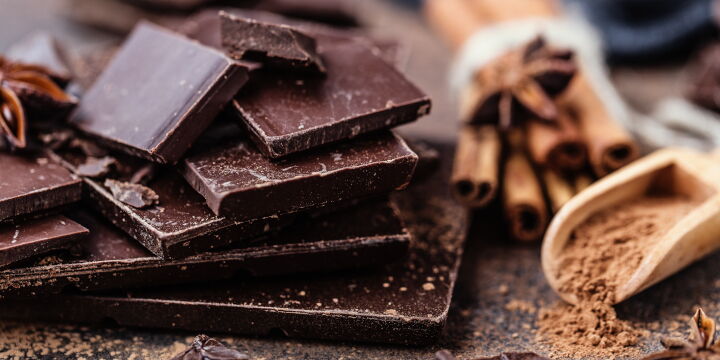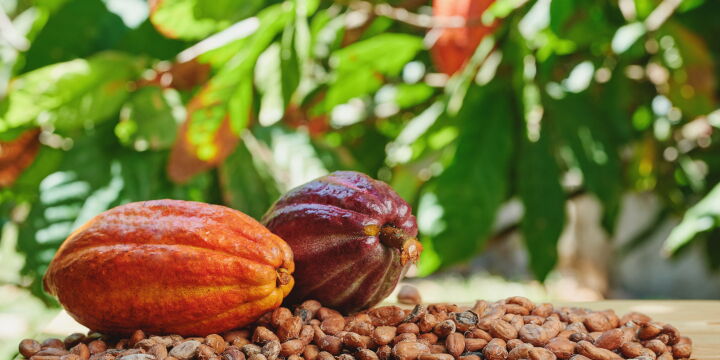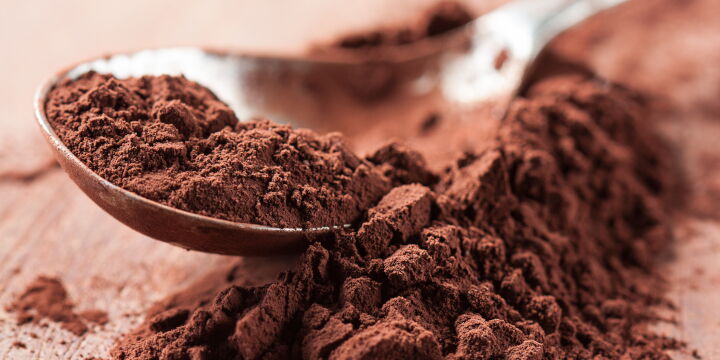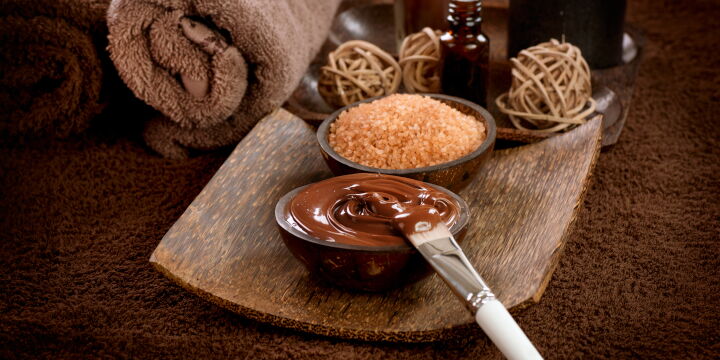Food that, very often, is considered the number one enemy of physical fitness is, in fact, rich in many properties useful for our physical and mental well-being.
Let's get to know it better and see how to consume it without falling into excess..
History
Mexico, Peru and Panama are the places where Theobroma Cacao is produced; the evergreen plant that grows mainly in South America. Initially cultivated by the Olmecs; a pre-Columbian civilization from the tropical area of Mexico, in 1500, was still called Kakawa.

It was the Maya who nicknamed cocoa the food of the gods for the nutritional properties and the symbolic and religious value they attributed to it.
Chocolate was originally consumed in liquid form, mixed with hot water and, often, flavored with vanilla, pepper or chilli.
In 1502 Christopher Columbus, returning from Honduras, where he had had the opportunity to taste the precious drink, brought some cocoa beans as a gift to Ferdinand and Isabella of Spain and here cocoa makes its first appearance in Europe.
A few years later, Hernàn Cortéz took care of spreading cocoa in Europe.

It belongs to the Sterculiacee family; is a small tree in South America with berry fruits containing a number of seeds ranging from 40 to 80, depending on the variety.
From cocoa to chocolate
Chocolate represents the final product of a long process that begins with the harvest of the fruit or cabosse.
The beans, present inside, are extracted and left to ferment for a few days so that they acquire precise organoleptic characteristics.
Subsequently they are subjected to a first roasting which gives them the typical color and minced to obtain the grain.
By repeating these operations, the cocoa mass is obtained, consisting of a fat part (butter) and a dry part (powder) which can be obtained and isolated by pressing.
At this point, according to the type of chocolate, the ingredients are mixed in variable proportions.
A good chocolate has a cocoa percentage equal to at least 43% although a value greater than 70% is conventionally used as an ideal: the higher this value, the greater the purity despite the fact that the taste becomes very bitter and intense.
Nutritional characteristics
Bitter cocoa has a high energy content; an average of 100g of powder provides approximately 350 kcal with a preponderance of lipids, a good amount of protein and a small amount of carbohydrates, sugars and fibers.
There isnt shortage of vitamins (group B, K, A, C) and minerals (iron, magnesium, copper, potassium, phosphorus, zinc and calcium).

100gr bar of chocolate provides just under 500 kcal with variable lipids and carbohydrates: dark chocolates are mainly rich in lipids while milk-based preparations also see large quantities of sugars, a feature that makes this product not suitable for daily consumption and in excessive doses.
Effects on health
Cocoa contains interesting molecules for their proven pharmacological action which makes it a potential nutraceutical food. Consuming cocoa and extra dark chocolate may be related to some health benefits.
Antioxidant
Cocoa is a food with a strong antioxidant power given the high presence of polyphenols, in particular, flavonoids able to counteract oxidative stress and limit damage in all areas of the body.
Given the importance of these molecules, cocoa and extra dark chocolate are valid food sources from which to obtain them.
Mental focus
Cocoa contains theobromine and to a lesser extent caffeine, methylxanthines useful in raising the attention levels of the brain, promoting concentration and removing the sense of fatigue.
Let's not forget choline, which is essential for the synthesis of acetylcholine, one of the main neurotransmitters.
Consuming a small square of dark chocolate with a coffee can be a pleasant habit to adopt before intense study sessions or mental efforts.

How many times have we heard that chocolate puts you in a good mood?
Who hasn't craved chocolate in moments of sadness, the famous cravings?
There is something true and scientifically proven.
Cocoa naturally contains tryptophan and serotonin involved in raising mood, to which phenylethylamine (PEA) known as the hormone of love and anandamide, a neurotransmitter linked to euphoric states, must be added.
Did you know that..
If present in excess, does serotonin favor the onset of migraines?
sondaggio_si = I knew this effect
sondaggio_no = I just learned a new thing
In fact, in case of headache it is not advisable to eat chocolate, especially dark chocolate and in large quantities.
Cardiovascular system
Different studies have shown the effect of some polyphenols contained in cocoa on several aspects related to cardiovascular health.
In particular, interesting data emerged about:
- Reduction of inflammatory markers
- Protection against LDL cholesterol subject to oxidation
- Stimulation of nitric oxide at the endothelium level
- Vasodilation and improvement of the hypertensive picture
Intestine and microbiota
The bioactive metabolites of cocoa can act directly on the intestinal mucosa through anti-inflammatory activity, positively influencing the capabilities of the immune response. Furthermore, the same polyphenols, together with the fibers, can modulate the composition of the intestinal microbiota through a prebiotic effect, favoring the growth of Lactobacillus and Bifidobacterium and reducing pathogenic species and the risk of developing pathologies.
Skin, hair and body
Isn't uncommon to find balms or masks made with cocoa or chocolate and other body care products.
Cocoa is useful for maintaining proper hydration, elasticity and skin tone, preventing dryness and blemishes.
Furthermore, the high percentage of polyphenols proves to be a natural protection from the sun's rays, counteracting free radicals.

Copper, zinc and iron are, on the other hand, the allies of the hair that favor the processes of regrowth and cell renewal
Conclusions
As good as it is rich in properties.
Did you expect it?
Its always nice to have a tablet or a box of chocolates in your pantry, especially in times like this when the holiday season is approaching and he cannot miss it..
My advice is to prefer chocolate with high percentages of cocoa: the flavor will initially not drive you crazy but re-educate the palate to more genuine flavors, not altered, can only do you good.
